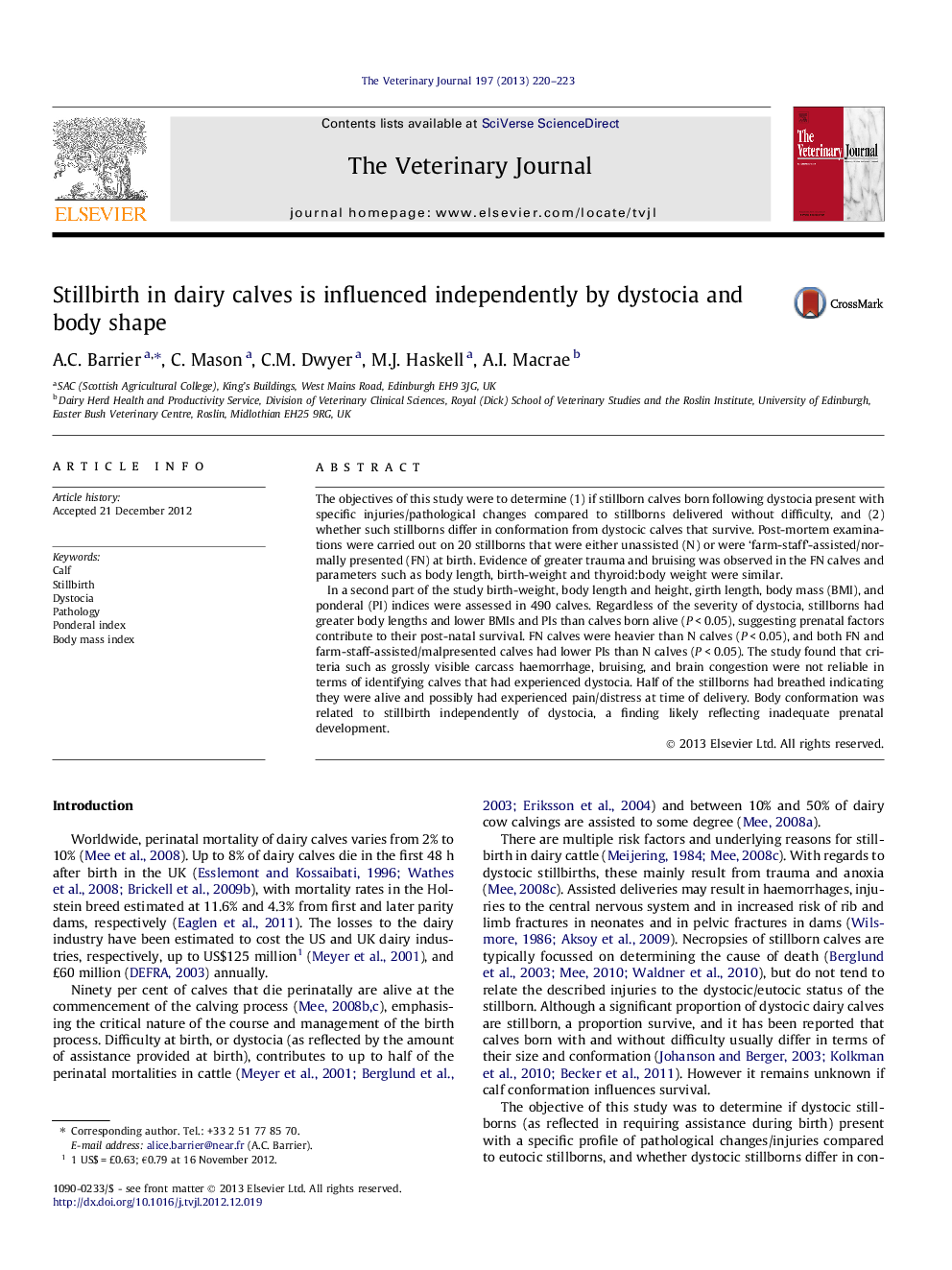| Article ID | Journal | Published Year | Pages | File Type |
|---|---|---|---|---|
| 5798206 | The Veterinary Journal | 2013 | 4 Pages |
The objectives of this study were to determine (1) if stillborn calves born following dystocia present with specific injuries/pathological changes compared to stillborns delivered without difficulty, and (2) whether such stillborns differ in conformation from dystocic calves that survive. Post-mortem examinations were carried out on 20 stillborns that were either unassisted (N) or were 'farm-staff'-assisted/normally presented (FN) at birth. Evidence of greater trauma and bruising was observed in the FN calves and parameters such as body length, birth-weight and thyroid:body weight were similar.In a second part of the study birth-weight, body length and height, girth length, body mass (BMI), and ponderal (PI) indices were assessed in 490 calves. Regardless of the severity of dystocia, stillborns had greater body lengths and lower BMIs and PIs than calves born alive (PÂ <Â 0.05), suggesting prenatal factors contribute to their post-natal survival. FN calves were heavier than N calves (PÂ <Â 0.05), and both FN and farm-staff-assisted/malpresented calves had lower PIs than N calves (PÂ <Â 0.05). The study found that criteria such as grossly visible carcass haemorrhage, bruising, and brain congestion were not reliable in terms of identifying calves that had experienced dystocia. Half of the stillborns had breathed indicating they were alive and possibly had experienced pain/distress at time of delivery. Body conformation was related to stillbirth independently of dystocia, a finding likely reflecting inadequate prenatal development.
